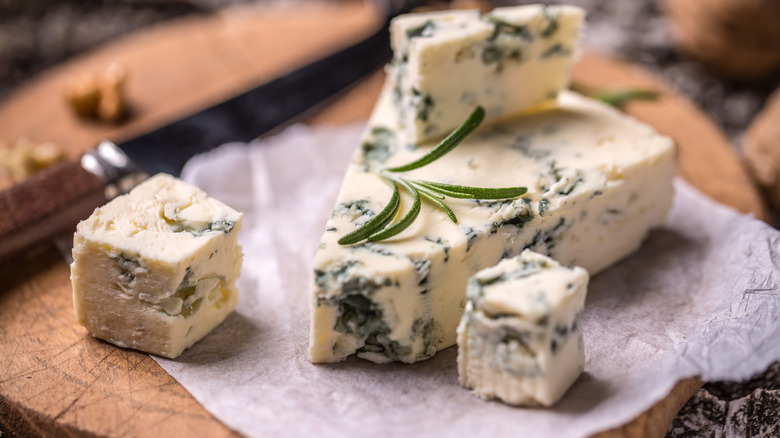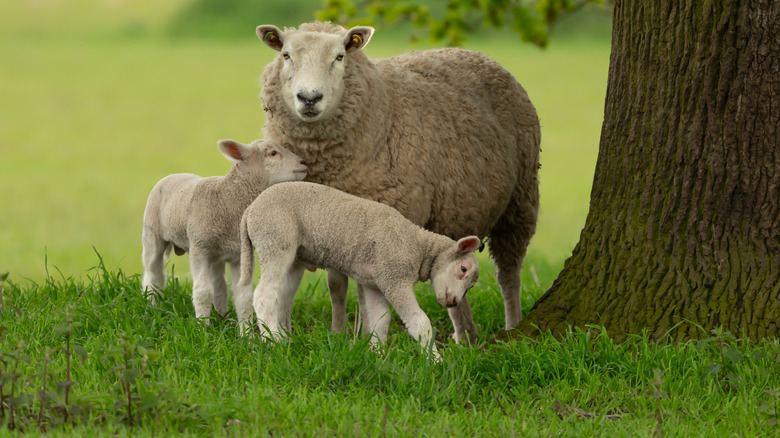Is There Truly A Best Time Of Year To Enjoy Pungent Roquefort Cheese?
We may receive a commission on purchases made from links.
We wait patiently for the sweet smell of spring for strawberries. We hold off on the refreshing crunch of watermelon until summer. We wouldn't think of warming our hands with a hot cup of apple cider until September at the earliest. Some also say we should be holding out until late fall or early winter to enjoy the deliciously pungent flavor of Roquefort, one of the world's most beloved blue cheeses. Not according to Molly Browne, the dean of mongers at Cheese State University and education director at Dairy Farmers of Wisconsin. "In the modern era, milk quality is not as beholden to seasonal shifts as it once was, so cheese lovers can expect to find delicious cheese in the marketplace during any season," she told Chowhound exclusively.
The idea of pinning Roquefort to the fall season is based on its traditional production schedule. The cheese has a Protected Designation of Origin status, meaning it can only be made using raw sheep's milk, and the wheels must age in the limestone caves of Roquefort-sur-Soulzon and the surrounding area. This designation outlines a timeframe for milk production, which takes place through spring and summer and is followed by at least 90 days (though sometimes up to five or even nine months) of cave aging, meaning many of those spring and summertime wheels ripen fully by autumn. U.S. producers making Roquefort-style blue cheeses tend to follow similar practices.
Timing the best season for sheep's milk
Why is seasonal dairy sometimes sought after? "There is a perception that spring milk is desirable for cheese –- this milk is often associated with freshness and abundance, is typically high in both fat and protein (which is good for cheesemaking), and historically would have been unavailable during the winter months based on seasonal lactation cycles of ruminant animals," Molly Browne explains. What's changed, she adds, is that "The vast majority of cheeses out there will not exhibit any discernible seasonal shifts, thanks to modern farming techniques that ensure that cheesemakers have a stable supply of consistent milk to work with."
Still, there are some blue cheese makers in the United States who limit the availability of their cheeses based on a perceived ideal timing for milk, and they make great substitutes for Roquefort. Rogue Creamery celebrates the release of its Rogue River Blue on the autumnal equinox, which falls on September 22 or 23, nearly a year after the milk for the cheese has been produced. Made from cow's milk collected in the late fall, with aging taking place over nine to 11 months in Rogue's caves, the cheese – which is wrapped in syrah grape leaves macerated in pear brandy for a dry yet fruity finish — is only available for sale in limited quantities the following fall. Whether you plan to eat blue cheese alone, or whipped with butter as a delicious topping for steak, keep one thing in mind: Good things come to those who wait.

